 |
|
| Issue #118 • July/August, 2009 |
My very favorite cookware is old. Some of it very old. It’s nonstick, is equally at home in the kitchen or wilderness camp, is the ultimate slow-cooker, and you can whop a mountain lion on the head with it and kill it. (Okay…maybe that last is a bit of a stretch.) Of course, it’s my cast ironware.
I love it so much that I have a real wide assortment: two small 6-inch fry pans (great for an egg or two), an 8-inch fry pan, a 10-inch fry pan, and a huge 18-inch frying pan that you could certainly frighten a mountain lion with. I also own a Dutch oven, waffle iron, cornbread stick pan, muffin pan, two griddles, and a roaster.
Yes, cast iron is heavy. Especially the larger pieces of cookware. But that weight is why it cooks so very well. The iron heats up quickly, distributes that heat evenly, and holds the temperature a long time. You have fewer burned meals where a spot on the pan scorches your dinner, fewer “undone” spots in your baked foods, and, because you season the pans, the surface is quite “stick-free,” without Teflon coating to chip out in your food. (Which, by the way, has dubious health cautions.) The iron does leach minute amounts of iron into the food you cook, which is good for you, preventing iron deficiency without taking a vitamin supplement!
|
Cast ironware has been around for centuries. It became very popular in the 1700s, often becoming part of a family inheritance or a bride’s dowry. European immigrants to the New World often brought a treasured cast iron pot or frying pan along with them, even when they had to leave other valuables behind. A couple of my own frying pans are more than a hundred years old. I was given them by an elderly neighbor, who was given them as a young housewife by her elderly neighbor back in the homesteading days. I’m cooking with history every day. One wonders what those pans have seen.
Buying cast iron
I truly believe the older cast iron cookware is better than the newer pots and pans. I have several “unnamed” pans that are my oldies, then several Griswold pans that are great. I have one old Lodge frying pan that is excellent and one made in China, which is not. It was a gift from a well-meaning relative. It’s too light and just won’t take a seasoning well, no matter what I do.
The newer Lodge brand cast iron cookware is not as finely polished as the older pans were, but the company claims that they are preseasoned and will cook well. I haven’t yet tried a new one; my old bunch does not need replacing. And after raising nine kids, they got a whole lot of use.
You can certainly buy new cast iron cookware through such places as Lehman’s Hardware or the Cumberland General Store, many local and mail order sports stores, such as L.L. Bean, or your local farm and ranch store or well-stocked hardware store. (From my own experience, stay away from “made in China” ironware.)
Or you can keep an eye out at your thrift stores, Goodwill, Salvation Army, yard sales, or auctions. I’ve picked up many of my treasured pots and pans at just such places, for prices that made me smile. Of course, you can also get word around that you’re really interested in picking up some cast ironware. You never know when you might find your next piece right at the neighbor’s, unused and unwanted…but your pot of gold.
Now, not all used cast iron cookware looks nice. Being iron, it easily rusts. My Dutch oven was found in a shed, full of water and rusty nails! Ugly? Oh yes. But now it’s a black beauty. Rust can be dealt with. Another thing that makes cast iron look nasty is the accumulation of black goop that sticks to the outside of frying pans that are used on kitchen ranges. (It doesn’t happen with campfire cooking; it burns right off.) This, also, is a minor cosmetic fault and is easy to fix.
Restoring rusty cast iron
Rusty cast iron is easily reclaimable unless the rust has deeply eaten into the iron, causing deep pits or holes. This is not commonly seen, but is always a possibility. Most of the time, all that is needed is a good washing with hot, soapy water and a green nylon scrubby. With lots of elbow grease and a couple of trips through the sink, the pot or pan is often smooth and nearly as good as new. If the rust is more tenacious, you can use a steel wool pad and scour it off with that. In severe cases, I’ve taken a sanding disc to it, removing the rust first, then using a very fine grit to re-polish the surface of the iron.
Once your pan is clean and smooth, rinse it well with boiling water, then dry it with a kitchen towel. As the iron is now unprotected, even a little moisture can quickly rust your new pan. You will now season the pan, as if it were new. (See instructions later on.)
Cast iron pots and pans with the “crud” caked on are a lot easier to clean than you’d imagine. I just build a nice campfire on a damp day, toast a few marshmallows, then shove my iron pan into the hot coals and pile them over the pan with a stick. I keep the fire going for awhile, then check the pan. It usually only takes a little while in the fire to burn off all the icky build-up on the sides of the pan. Suddenly it looks like new. Wow, almost magic!
Cool your pan gently, then wash it with hot soapy water and a scouring pad, if necessary, rinse with boiling water, and dry. Again, you will need to season the pan to make it cook well again.
Seasoning your cast iron
Cast iron is made by pouring molten iron into molds. This iron has tiny pores that will absorb grease, which, when gently heated over a period of time, form a natural, slick, stick-free surface. This is called “seasoning,” and is necessary for much new ironware…which is often treated with an inedible coating at the factory to prevent rusting. It is also necessary for all “saved” cast iron cookware that has been scoured, burned, or sanded. You will also need to re-season any cast iron cookware that you have washed with very soapy water, as it removes some of the seasoning and foods will now stick.
|
I’ve experimented with several different tried and true seasoning methods, and the one that works best for me is also the easiest. Wow! I like that. Simply wash, rinse, and dry your pan (new or reconditioned), then rub shortening gently all over the inside. Wipe away any excess with a paper towel. Then place your pan in the oven, turned down very lowabout 200° F. is good. Let the pan remain in the oven at that temperature for several hours. Then take it out and inspect the surface. It should be darker and evenly coated with a slick glazed finish. If not, just repeat the process. The end product will be a pan that is nearly as stick-free as Teflon…and the pan will last for generations without scratches or dents.
I even season the top of my kitchen range. I don’t cook directly on the top, but the seasoning prevents rust and gives it a nice mellow, dark finish. It’s much nicer than blacking it with stove polish. The stove looks “lived with,” not like a showpiece. I use olive oil and rub it on with an old rag. Then I build a gentle small fire and just warm up the top for an hour or two. It does smell a little, but the results are definitely worth it.
Frying with cast iron
Because iron heats quickly and evenly, it is an excellent choice for a frying pan. To fry a piece of meat or mess of potatoes, heat the pan on your stove until it is quite warm but not hot. Add your grease or oil and let it melt while the pan heats up further. Then, before the grease is very hot, add your meat or potatoes. Do not add potatoes or meat to your pan while the grease is still cold; you’ll invite sticking, despite your neat non-stick finish. It needs to sear just a bit before getting down to medium frying temperatures.
I use a wooden spatula when frying, but I also have used a metal spatula. Just try not to scrape or dig around in your pan more than necessary. You can scratch your natural nonstick surface and make areas that will eventually expand into places where food may stick. Some people like to use plastic or nylon spatulas on their cast iron, but I prefer the thinner, stiffer wood or metal.
Roasting in the Dutch oven
To roast a piece of meat in your cast iron Dutch oven, add a tablespoonful of grease or oil to the inside surface and heat it to medium hot, rocking the pan so that the entire bottom surface is coated with the oil. Then add your seasoned meat gently to avoid spattering hot grease on your hands. I use two long forks to place the meat in the pan. It will begin searing on contact. I sear all surfaces, browning them lightly to keep in juices. Then add a cupful of water and place the lid on, turning the heat to medium. You can also use your Dutch oven in your range oven; the results are the same. If using your oven, turn it to 350° F. or less if you want the meat to cook slower.
|
With a smaller piece of meat, a pound or two, you can also add vegetables after you’ve added the water so they can roast along with the meat. In this way they’ll absorb the flavors from the seasoned meat and brown slowly to a gorgeous color. I often add halved potatoes, carrots, onions, summer squash, parsnips, or turnips. This makes a great “quick” one-dish meal. Add some homemade biscuits or rolls and you’ll have a meal folks will rave over. If your roast is large, cook it for about an hour and half, then add your vegetables so that they don’t overcook and become mushy.
The Dutch oven became famous as a campfire cooking essential. And it still is! The handiest Dutch ovens have a lid that has a rim around the sides. That is so that when you place hot coals on the lid, they don’t slide off.
To roast a meal in your Dutch oven over a campfire, start it off like you would at home. You want to cook on a bed of coals, not a blazing fire. I like to make a “nest” in the bed of hot coals, then drag a layer of white ashes on top of that, place the Dutch oven full of meat and vegetables on that, then scoop a layer of coals onto the lid. You may have to replace the coals on the lid, as they’ll cool off faster than the bed of coals under the Dutch oven. Try to resist the urge to “check up” on your meal; it’s a little more involved than when you do it at home, simply lifting the lid! You have to be careful of the coals on the lid, so they don’t fall off or worse yet, dribble into your meal. In addition, each time you lift the lid, you set back the time your meal will take to cook as you release heat and steam from the pot.
This method of cooking is the original slow cookery. You could pile coals up around your Dutch oven, pile coals on the lid, go off and do something else, and your meal would be ready when you are hungry. Nifty, huh?
Baking in the Dutch oven
You can also bake in your Dutch oven. That’s why they called it a Dutch oven! You can bake anything from biscuits to breads, cobblers, and even pies in one. Even on a campfire. Mom used her trusty Dutch oven to bake cherry cobblers for us in camp when I was just a kid. One night, though, we heard a clanking sound outside, where she’d left the cobbler sitting on a bench to keep cold overnight. In the morning, the top was all sticky cherry goop. The cobbler was half gone and there were little cherry raccoon tracks all over the bench…He’d taken the cover off with one paw, gobbled the cobbler, then put the lid back on!
Using the Dutch oven to bake in a traditional oven is easy, but baking on campfire coals does require a little practice. I snuggle the oven down in a bed of coals, covered with a two-inch layer of ash, and pre-heat it with the lid on for about ten minutes. Then I take a piece of clean rag, rubbed with shortening, and quickly grease the bottom of the oven lightly. You don’t want pools of melted shortening, just a light greasing. Quickly lay your biscuits in the pan and put the lid on. Add coals to the top; about five three-inch pieces is about right. Let the biscuits bake for about ten minutes, then check them. If the bottom is browning too quickly, flip them over so the top will also brown as they finish baking.
Old time pioneers and cowboys greased their Dutch oven with a square of salt pork or bacon fat. They said it gave the biscuits a real good taste. I agree!
Waffle irons, muffin pans, and cornbread stick pans
When I was learning to bake waffles, muffins, and cornbread sticks using cast iron, I could not get them to come out right. They always stuck and burned and I had the very devil of a time getting the nasty mess picked out of the pans. Yuck! Then a lady asked me if I preheated my pans enough. Enough? I didn’t heat them at all, except for the waffle iron, and I only heated that enough to barely melt the shortening so I could grease it.
So I tried to preheat the iron. Wow! What a difference that made. I could finally make those delicate little cornbread sticks that look like ears of corn, and my waffles popped right out of the waffle iron.
To preheat your muffin and cornbread stick pans, place them in the oven at 250° F. for 10 minutes. Then quickly remove them, lightly grease them, and spoon in your batter. In the meantime, as you remove the pans, turn the oven up to 350° F. When the pans are full, slide them back into the hotter oven and bake as usual, until they are springy firm to the touch. Then remove them from the oven to cool for about ten minutes or so, until they pull away from the pan slightly. At this time, they are ready to remove from the pans. Using a fork or knife with the muffins can help release them with no tearing.
Using a cast iron griddle
|
Baking pancakes, flatbreads, crepes, and tortillas on a cast iron griddle is easy, but it does require a little practice. Pancakes and crepes need a hotter griddle than do flatbreads and tortillas. To determine if a griddle is hot enough for pancakes or crepes, heat it, grease it lightly, then wait a bit. If it is hot enough, a few drops of water dripped from your fingers will
sputter and dance across the surface. If it is too hot, they will zip, steam, and sizzle and the grease will start smoking. When the griddle is hot, pour your batter onto it. A smaller common-sized round or square one-burner griddle will hold three nice-sized pancakes or four smaller ones. Space your batter so when it spreads out and rises, it won’t touch its neighbor. If this happens, the pancakes will be hard to turn without ripping or folding pieces under. Let them bake until there are bubbles across the surface. You can gently lift an edge to see if the bottom is as golden as you’d like, then flip it over. No. I’m not nimble enough to actually “flip” my pancakes, but my son, Bill, can flip them neatly. (Show off!)
Tortillas and flatbreads need a medium griddle, which is cooler than the hot griddle for pancakes and crepes. Tortillas and other flatbreads are denser than pancakes and need more time to bake through and you don’t want to burn them in the process. Simply grease your hot griddle lightly and put your tortillas on it. You’ll be baking them for about two minutes on each side, and flatbreads about twice that long. Again, you can gently lift the edges of the tortilla to peek at the underside. You want it baked nicely, but not have burned spots.
Deep frying in cast iron
You can deep fry in a special cast iron saucepan, made for a deep fryer, but you can also deep fry in your Dutch oven. In fact, you can use any deep cast iron pot or pannot a frying pan because the hot grease could rise and overflow into your fire. You do not want a frying pan full of fire!
I have great memories of making homemade doughnuts in my Dutch oven, way up in our remote Montana homestead. (If you’ve never made homemade doughnuts, give ’em a try. Nothing you buy can even come close. Besides, they’re easy and fun to make, too!) No wonder cowboys would ride for miles to visit a ranch where the wife made “bear sign,” the local lingo for doughnuts!
Of course you can make French fries, but I use mine more for frying egg rolls, sopapillas, onion rings, tortillas for tacos, chulupas, fried chicken, fry bread, and, of course, doughnuts!
To fry in your Dutch oven or other iron pot, add several inches of shortening or oil. Never add too much or it can boil over and cause a fire. Heat the pan until the grease is very hot, but not smoking. When you drop in your first piece, it should rapidly float, not sink to the bottom and just sit there. If that happens, the grease is not hot enough and the food will absorb grease and be heavy. Properly fried food, when drained well on paper towels after frying, should not feel greasy.
When your larger food pieces have fried on one side, you may need to turn them so the other side will also cook well. I’ll spoon hot grease over my sopapillas and corn tortillas I’m frying, so they’ll get bubbles and become light and crispy.
When the food you’re frying is done, quickly spoon it out with a slotted spoon, taking care not to drizzle hot grease on yourself or on the fire to prevent accidents. Then place it on a multi-thickness of paper towels to drain well. Be sure to remove all pieces, especially French fries or bits of breading. If they burn, it’ll ruin your grease. You can seldom get rid of the scorched taste.
When you’re done frying, you can pour the hot grease through a clean piece of old towel or cheesecloth to strain it, saving the grease for another time. The deep frying actually helps maintain the seasoning of your pan, so it serves a double duty.
Problems with cast iron
While cast iron is about the perfect cookware, there are a few things that you shouldn’t do with it. You really shouldn’t use cast iron when you’re making dishes that include tomatoes or highly acidic fruit, such as pineapple. Cast iron reacts to acid, giving the food a nasty taste. So make your chili in another pot, your pineapple upside-down cake in something else, and make beef stew with gravy instead of tomatoes.
|
You wouldn’t believe it, but cast iron is actually kind of brittle sometimes. I dropped my very favorite old frying pan on the kitchen floor after washing it, and it broke the handle right off, taking a chunk of pan with it. Luckily, my blacksmith felt sorry for me and took it home with him. And the next visit, he presented me with my pan, all welded and ground down nicely. It was even re-seasoned! How nice. So, yep, they do break. Likewise, don’t put an ice cold cast iron pan on a fire or hot stove or a hot pan in cold water. Either can cause it to warp or crack.
Cast ironware rusts quite easily. Even seasoned pans can rust in spots, where the seasoning has worn out. So always dry your pans after washing and keep them in a dry spot. In camp, I pack mine in a heavy duty garbage bag, inside a waterproof canvas pack sack, just to keep them safe.
The handles of frying pans and pans out of the oven are hot. So is the bail or handle on your Dutch oven. Use hot pads or suffer burned fingers. You’ll find a heavy wire hook a great camp tool for lifting the lid on your Dutch oven. They have these nifty slip-on frying pan handle covers in some stores nowadays. They’re sort of like custom hot pads that slide over the handle when you want to move the pan. I have two and really like them.
Washing your cast iron
Here we enter the grounds of The Great Debate. Some folks swear you should never, never wash cast iron cookware. You just wipe them out after use. Other people just throw them in the sink and wash as usual. I kind of take the middle road. Yes, I do wash my cast iron cookware. And the sooner after use, the better. Often, I just pour boiling water in a hot pan, let it sit until I can reach my hand in the water, then use a nylon scrubbie and wash out the pan. This softens any hard crusted food, melts any grease, yet leaves the seasoning in the iron. When you use dish detergent, you do remove the seasoning, and will soon have trouble with foods stickingand often burningin your pans.
Cow country cooks and pioneers used the boiling water method, along with a handful of sand to scour out stubborn food. They didn’t have green nylon scrubbies!
After you have washed your cast iron, rinse it with boiling water while it is hot, then wipe it dry with a kitchen towel. The waffle iron and cornbread stick pans can be dried nicely in a warm oven, with the pans turned upside down. Any time you don’t dry your pans right after washing, you are risking rust forming where the seasoning is getting thin. And rust not only looks ugly, but it will shorten the usable life of your pan and make food stick.
Once you try cooking with properly seasoned cast iron cookware, I’m sure you’ll be hooked. I know I was, and that was more than 50 years ago. It just can’t be beat for ease of cooking as well as clean-up later. I’ll swear that food even tastes better when cooked in cast iron. All those cowboys and pioneers who cooked on cast iron couldn’t be wrong.


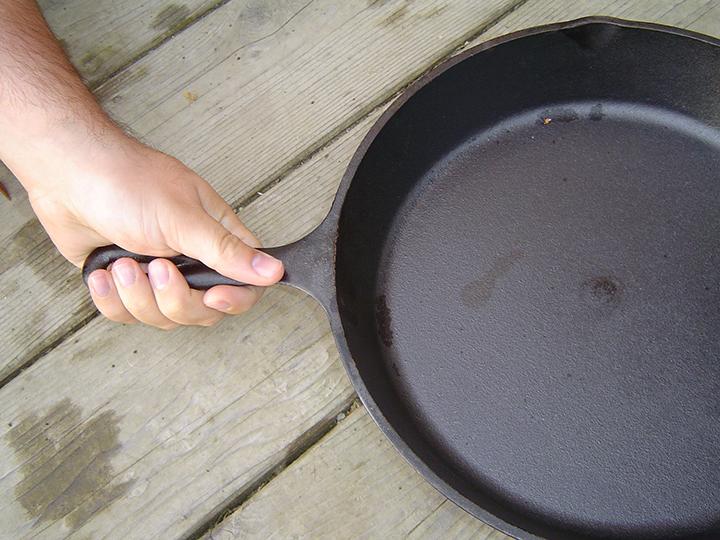












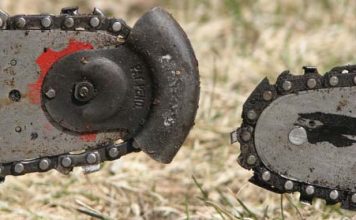
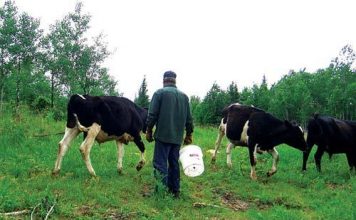

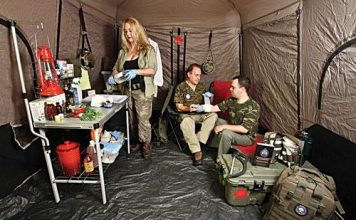
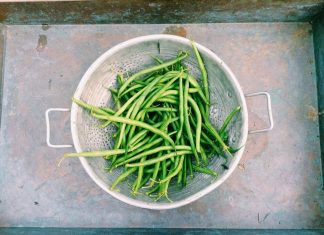
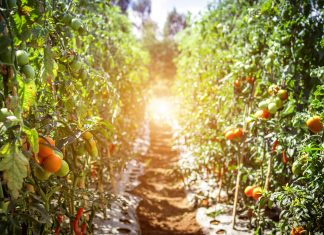
how do you prevent the cast iron from having that “gummy” residue during storage